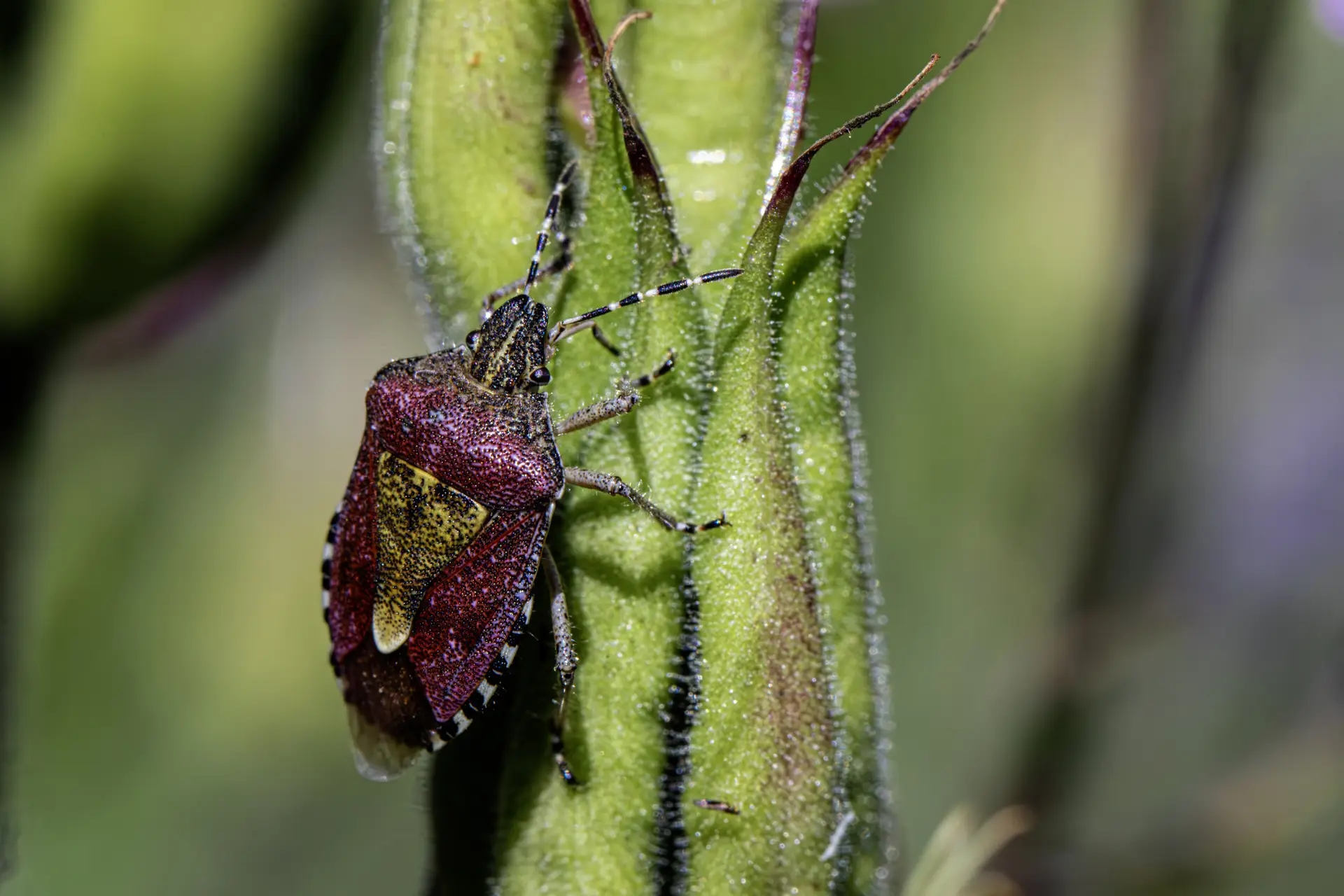The Hairy Shieldbug or Dolycoris baccarum is a common species of shieldbug found throughout Europe and parts of Asia. It belongs to the family Pentatomidae and is known for its distinctive appearance and behavior. Here’s an overview of this interesting insect:
Appearance
- Size: Adult Hairy Shieldbugs typically measure around 10-12 millimeters in length.
- Coloration: They have a variable color that can range from reddish-brown to purplish with a distinctive pattern of black and white spots. The body is often mottled with yellowish-brown.
- Body Shape: Shieldbugs have a characteristic shield-like shape, with a broad, rounded back that tapers to a point at the end.
- Hairiness: As the name suggests, the Hairy Shieldbug is covered in fine hairs, which is one of its distinguishing features.
- Antennae: The antennae are often banded with alternating black and white segments.
Habitat
- Preferred Habitats: The Hairy Shieldbug can be found in a variety of habitats including gardens, hedgerows, woodlands, and grasslands. They are particularly fond of areas with abundant vegetation.
- Geographic Range: They are widespread throughout Europe and parts of Asia, commonly seen in temperate regions.
Behavior
- Feeding: Hairy Shieldbugs are phytophagous, meaning they feed on plant sap. They use their piercing-sucking mouthparts to extract nutrients from a variety of plants, particularly favoring berries and seeds. They are commonly found on plants like raspberries, blackberries, and hawthorns.
- Reproduction: Females lay clusters of eggs on the undersides of leaves. The nymphs that hatch resemble smaller, wingless versions of the adults and go through several molts before reaching maturity.
- Lifecycle: They undergo incomplete metamorphosis, developing from egg to nymph to adult. There is usually one generation per year, with adults often seen from late spring to autumn.
Ecological Role
- Pollinators: While not primary pollinators, their presence on flowers while feeding on plant sap can result in incidental pollination.
- Predators and Parasites: Hairy Shieldbugs have natural predators, including birds and other insects. They can also be parasitized by certain species of wasps and flies.
Interesting Facts
- Defense Mechanism: Like other shieldbugs, Dolycoris baccarum can release a foul-smelling chemical from glands in their thorax when threatened, which deters predators.
- Seasonal Color Change: Their coloration can change with the seasons, often becoming darker in colder months to absorb more heat and lighter in warmer months.
Identification Tips
- Hairiness: Look for the fine hairs covering their body, a key feature distinguishing them from other shieldbugs.
- Coloration and Pattern: The variable reddish-brown to purplish coloration and the distinctive black and white spots on their body and antennae are good identifying markers.
- Habitat: Observing their habitat and preferred plants can also aid in identification, as they are often found on berry bushes and similar vegetation.
Summary
The Hairy Shieldbug (Dolycoris baccarum) is a distinctive and relatively common species of shieldbug. Recognizable by its hairy body and variable coloration, it plays a role in the ecosystem as a plant feeder and incidental pollinator. Found in various habitats across Europe and parts of Asia, it is a fascinating insect with interesting behaviors and adaptations.
Visited 877 times, 6 visit(s) today
Views: 1738
Subscribe to the newsletter:
